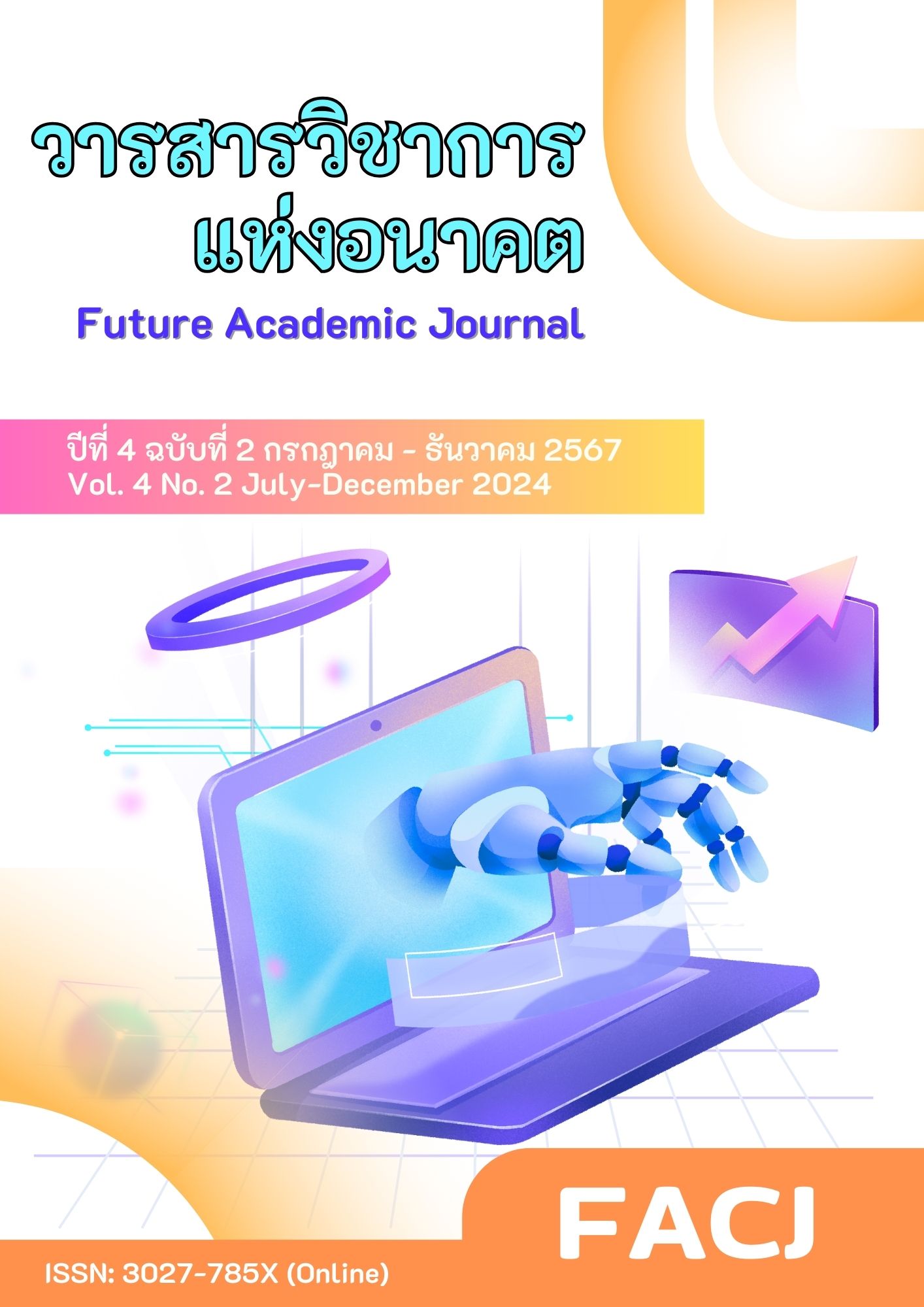ความสัมพันธ์ระหว่างภาษาลีในภาษาไทย
Main Article Content
บทคัดย่อ
บทความวิชาการนี้มีวัตถุประสงค์เพื่อศึกษากำเนิดและพัฒนาการของภาษาบาลี และเพื่อศึกษาความสัมพันธ์ภาษาบาลีในภาษาไทย
ภาษาบาลี ภาษาปาฬิหรือปาลิภาสา มีคำใช้เรียกแทนชื่ออยู่หลายคำทีเดียวเป็นภาษาที่มีมาตั้งแต่อดีต ผ่านกาลเวลากว่า 2500 ปีมาแล้ว ได้แผ่ขยายไปในภาษาไทยอย่างลึกซึ้ง บาลีเป็นภาษาถิ่นที่ใช้พูดกันในแคว้นมคธ เรียกว่า มาคธภาษา ตามชื่อแคว้น เมื่อพระพุทธเจ้าทรงอุบัติขึ้นในโลก ทรงใช้ภาษามคธหรือภาษาบาลีเป็นภาษาในการประกาศพระพุทธศาสนา ภาษาบาลีเป็นภาษาที่มีหลักแน่นอนในการเปลี่ยนแปลงรูปคำตามหน้าที่ทางไวยากรณ์ มีการบ่งบอกเพศของศัพท์ กาล วจนะ วิภัตติ และมีวิภัตติปัจจัยบ่งบอกหน้าที่ของตน
มีความสัมพันธ์ของคำที่มีประโยคทุกคำ บาลีเป็นภาษาที่มีความสำคัญในการรักษาพระพุทธพจน์ผู้ที่เรียนภาษาบาลีหรือจะใช้ภาษาบาลีจึงต้องเรียนรู้แบบแผนนั้น ๆ ให้ขึ้นใจ และจดจำ นำไปใช้ จึงจะเข้าใจภาษาบาลีได้
อีกทั้งคนไทยยังนิยมใช้ภาษาบาลีในการตั้งชื่อซึ่งเป็นสิ่งสมมติขึ้น แต่ถ้าตั้งชื่อให้เหมาะสมกับจริตและอุปนิสัยของบุคคลนั้น ชื่อก็จะกลายเป็นสิ่งสำคัญและเป็นอัตลักษณ์ของผู้นั้นและสามารถนำประโยชน์สุขมาให้ทั้งทางตรงและทางอ้อม ส่วนความสัมพันธ์คำบาลีที่ใช้ในภาษาไทยปัจจุบันซึ่งมีประโยชน์อย่างยิ่งสำหรับผู้ใช้ภาษาไทยในการพูด เขียน สนทนา และการสื่อสาร ในการใช้ชีวิตประจำวันได้อย่างถูกต้อง และชัดเจน การเรียนรู้ความสัมพันธ์ระหว่างภาษาบาลีกับภาษาไทยอย่างรู้ลึก รู้รากศัพท์และรู้ความหมายที่ถูกต้องจึงมีคุณค่าแก่การศึกษาอย่างแท้จริง
Article Details

This work is licensed under a Creative Commons Attribution-NonCommercial-NoDerivatives 4.0 International License.
References
คณาจารย์ คณะครุศาสตร์ จุฬาลงกรณ์มหาวิทยาลัย. (2539). ภาษาไทย 3. พิมพ์ครั้งที่ 3. กรุงเทพฯ: จุฬาลงกรณ์มหาวิทยาลัย.
คณาจารย์ คณะครุศาสตร์ จุฬาลงกรณ์มหาวิทยาลัย. (2539). วรรณคดีบาลี (Pali Literature). กรุงเทพฯ: จุฬาลงกรณ์มหาวิทยาลัย.
จันทร์ ไพจิตร. (2493). ตำราเลขานุการ. กรุงเทพฯ: ไทยวัฒนาพานิช.
นาวาเอกทองย้อย แสงชินชัย. (2557). บาลีวันละคำ. กรุงเทพฯ: รุ่งแสง.
พระยาอุปกิตติศิลปะสาร (นิ่ม กาญจนชีวะ). (2541). หลักภาษาไทย. กรุงเทพฯ: ไทยวัฒนาพานิช.
พระอัคควังสเถระ (รจนา), พระธรรมโมลี (สมศักดิ์ อุปสโม). (2546). สัททนีติ สุตตมาลา ภัมภีร์หลักบาลีไวยากรณ์. กรุงเทพฯ: ประยูรสาส์นไทย.
วิสันติ์ เกาะแก้ว. (2529). การใช้ภาษาไทย. กรุงเทพฯ: มหาวิทยาลัยศรีนครินทรวิโรฒ ประสานมิตร.
สำนักงานพระพุทธศาสนาแห่งชาติ. (2560). สัททานุกรมพระไตรปิฎกเชิงวิจัย ฉบับบาลี-ไทย. กรุงเทพฯ: ประยูรสาส์นไทย.
สำนักงานราชบัณฑิตยสภา.(2559). ภาษาไทย ภาษาสื่อ ฉบับราชบัณฑิตยสภา. กรุงเทพฯ: สำนักงานราชบัณฑิตยสภา.
สุธิวงศ์ พงษ์ไพบูลย์. (2545). หลักภาษาไทยและการใช้ภาษาไทยในสยาม. กรุงเทพฯ: มหาวิทยาลัยธรรมศาสตร์.
สุภาพรรณ ณ บางช้าง. (2526). ประวัติวรรณคดีบาลีในอินเดียและลังกา. กรุงเทพฯ: ศักดิโสภา.
เอื้อน เล่งเจริญ. (2534). นานาภาษาไทย. กรุงเทพฯ: โอ.เอส.พริ้นติ้ง เฮาส์.

